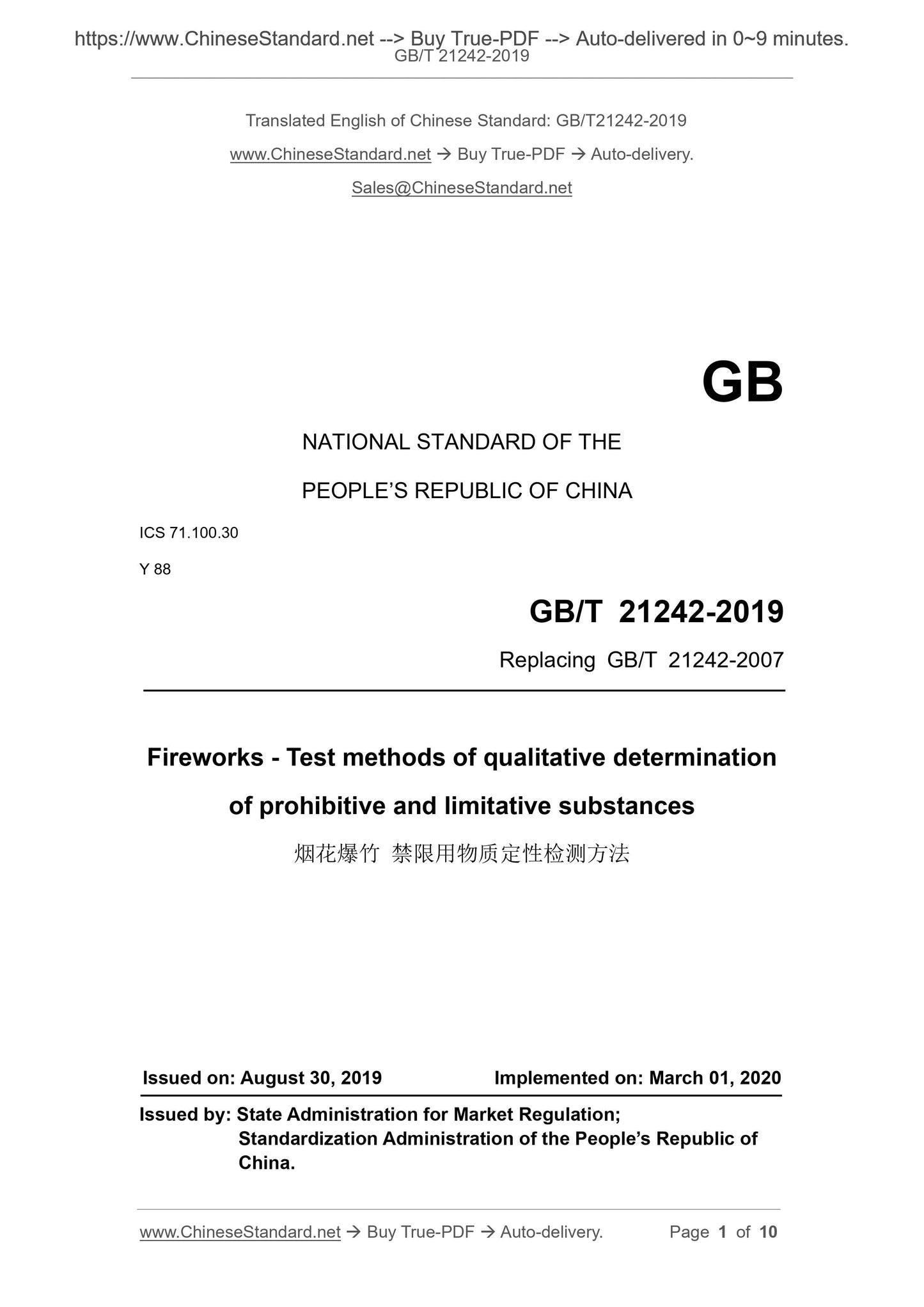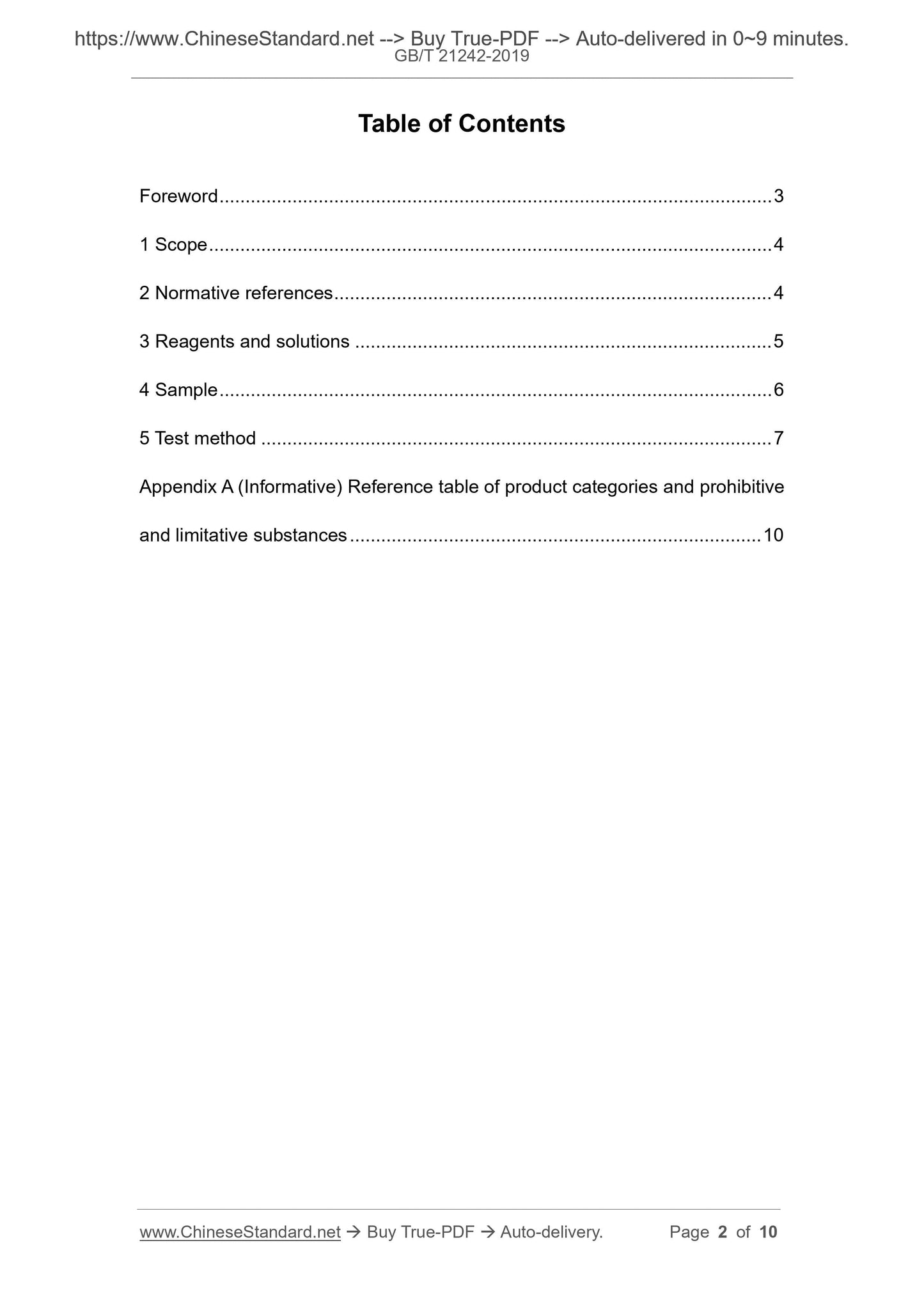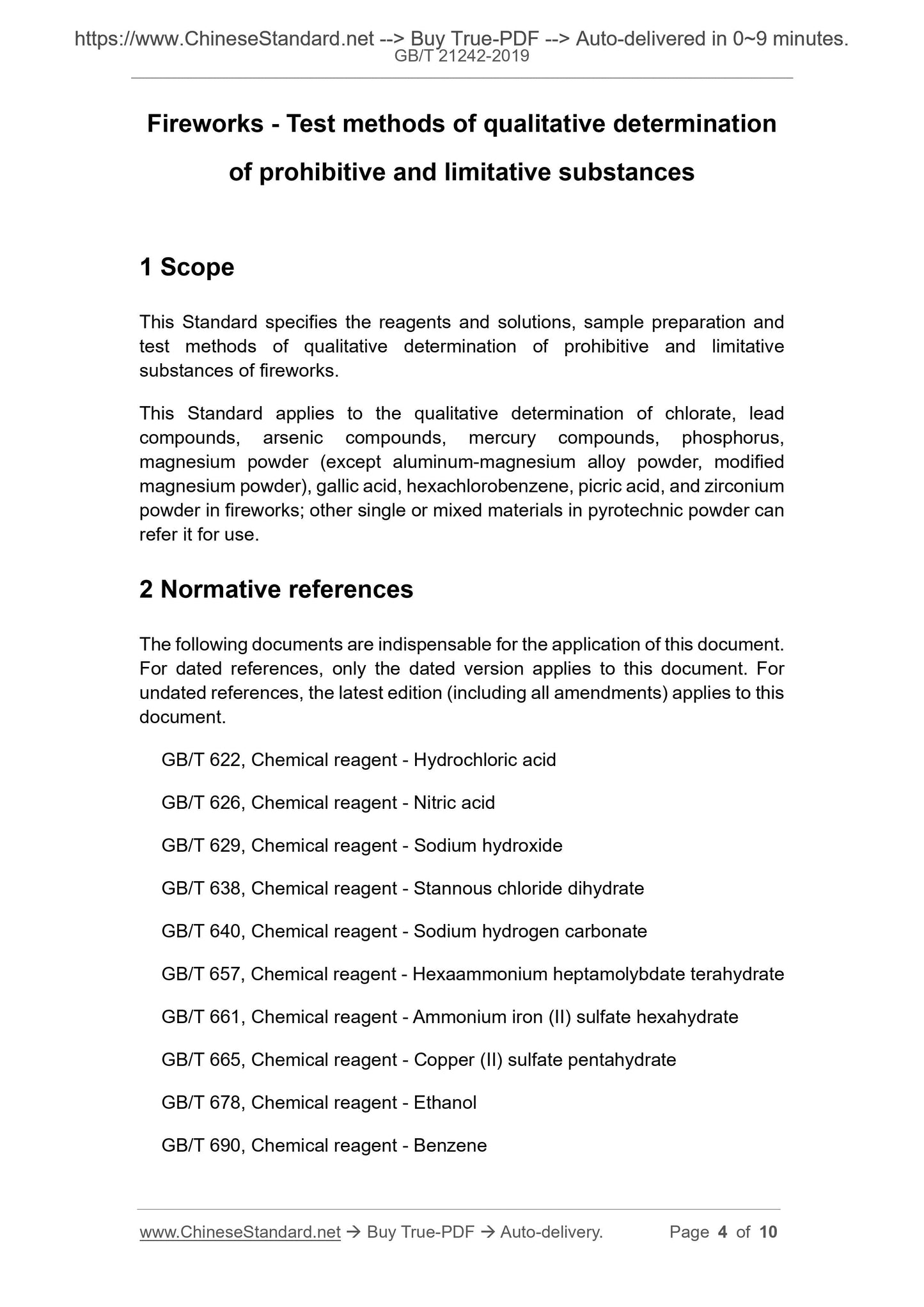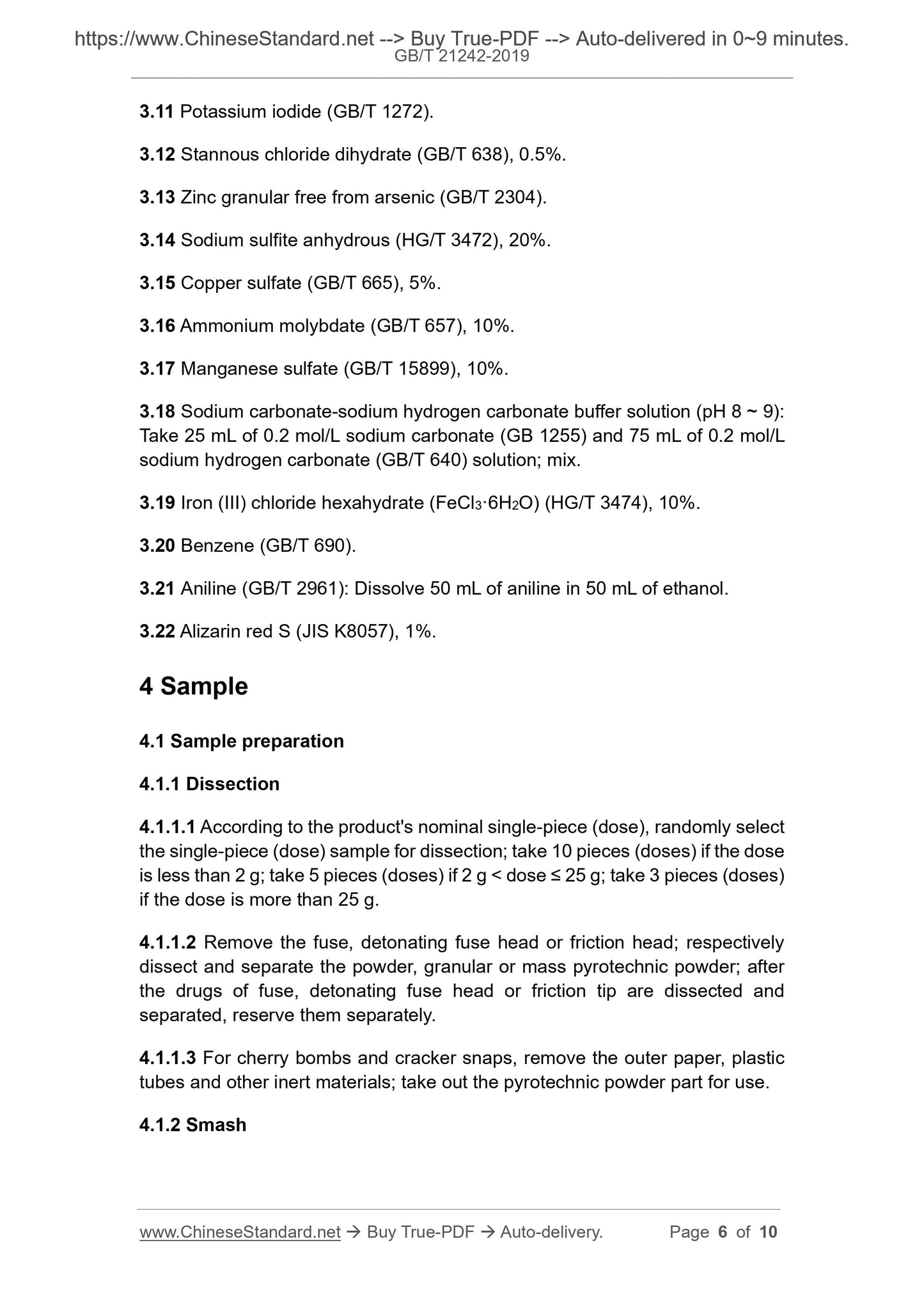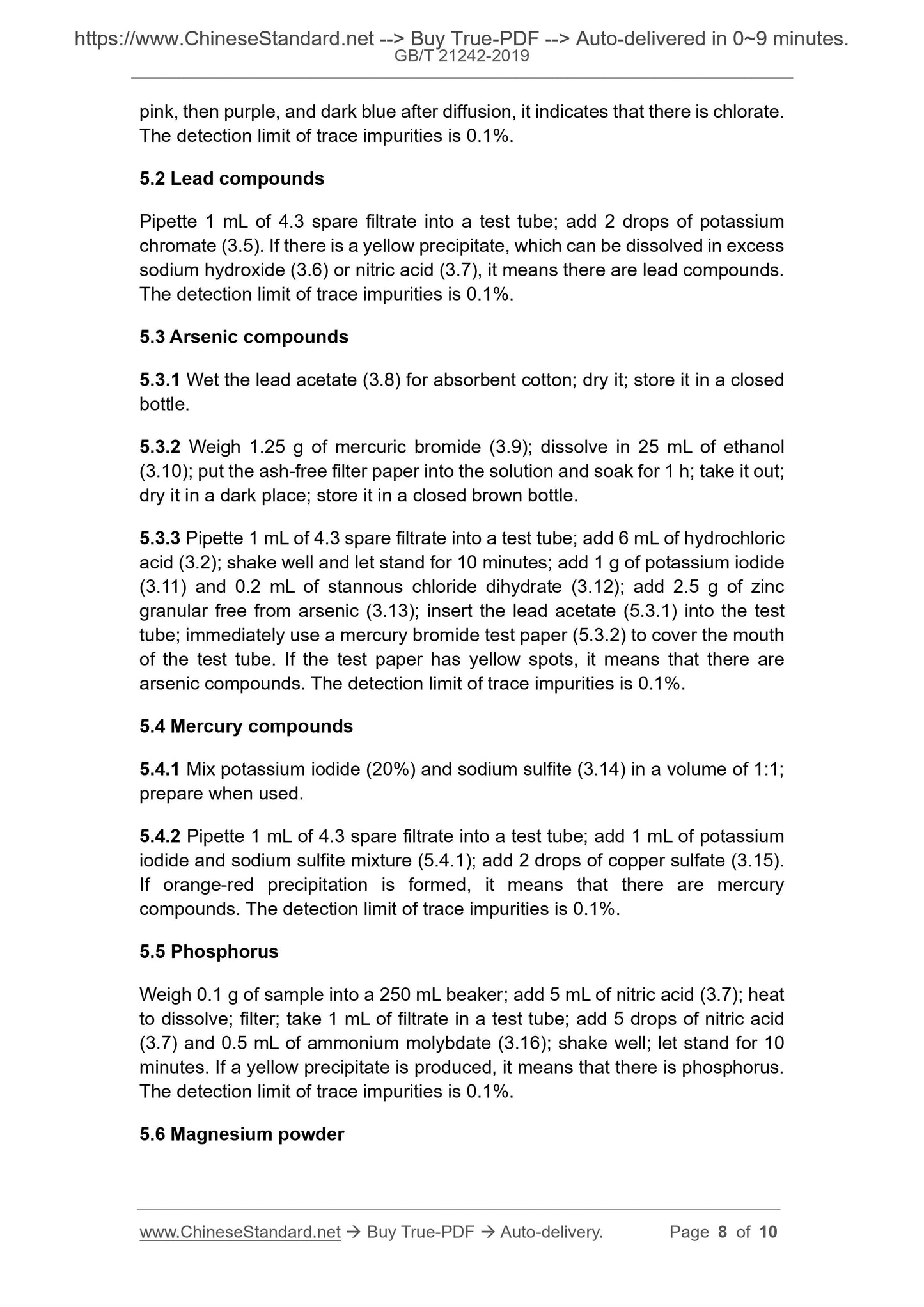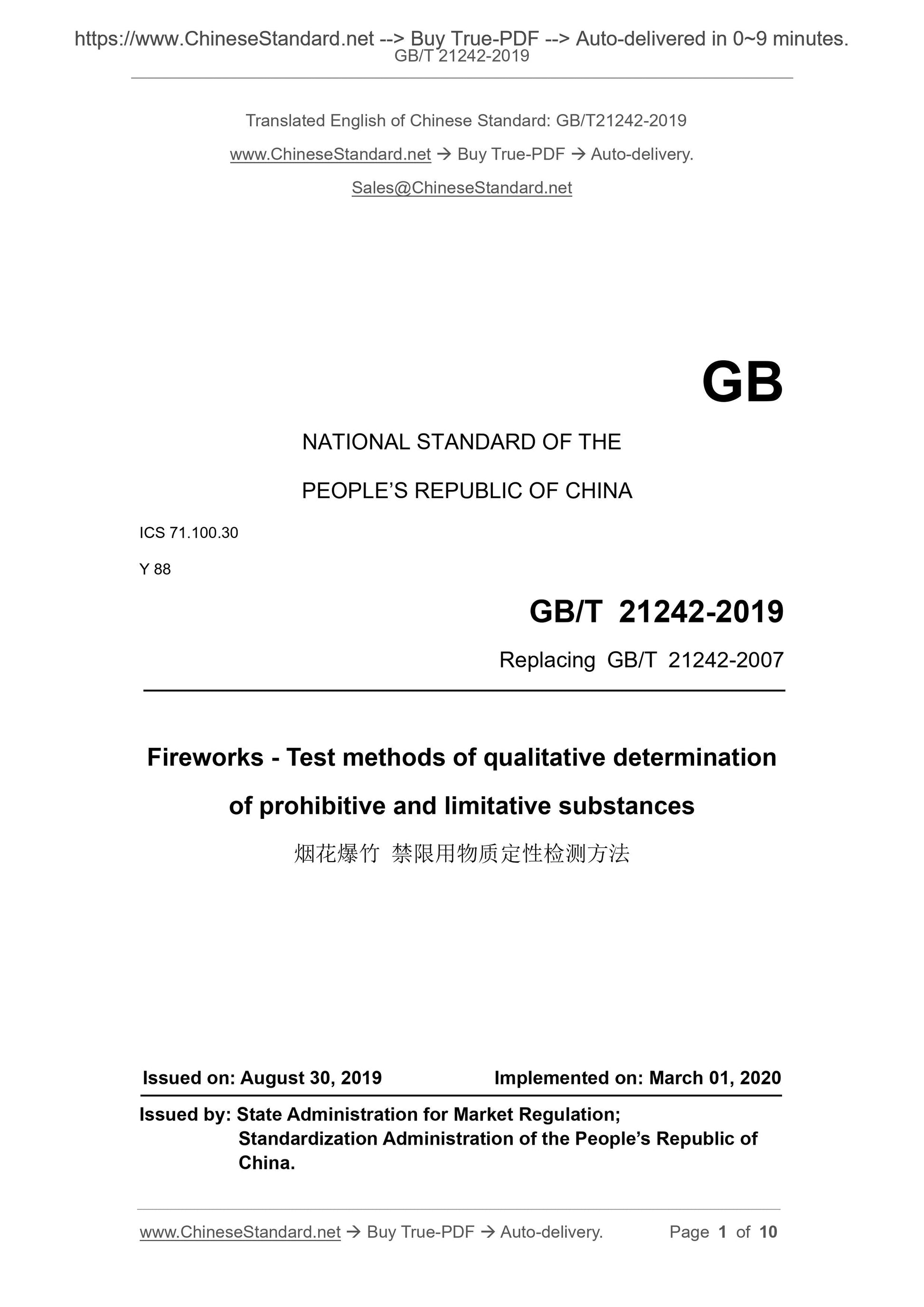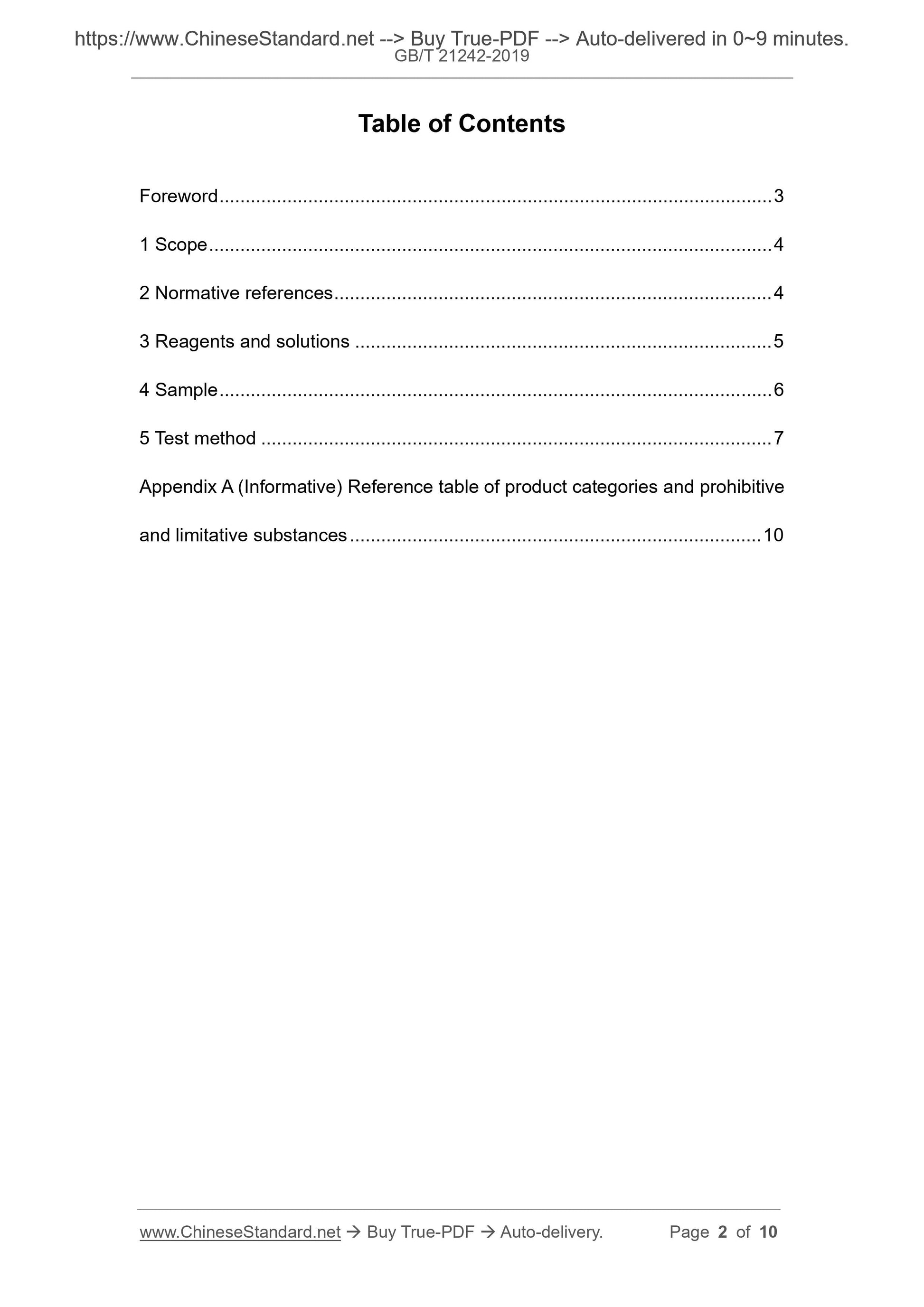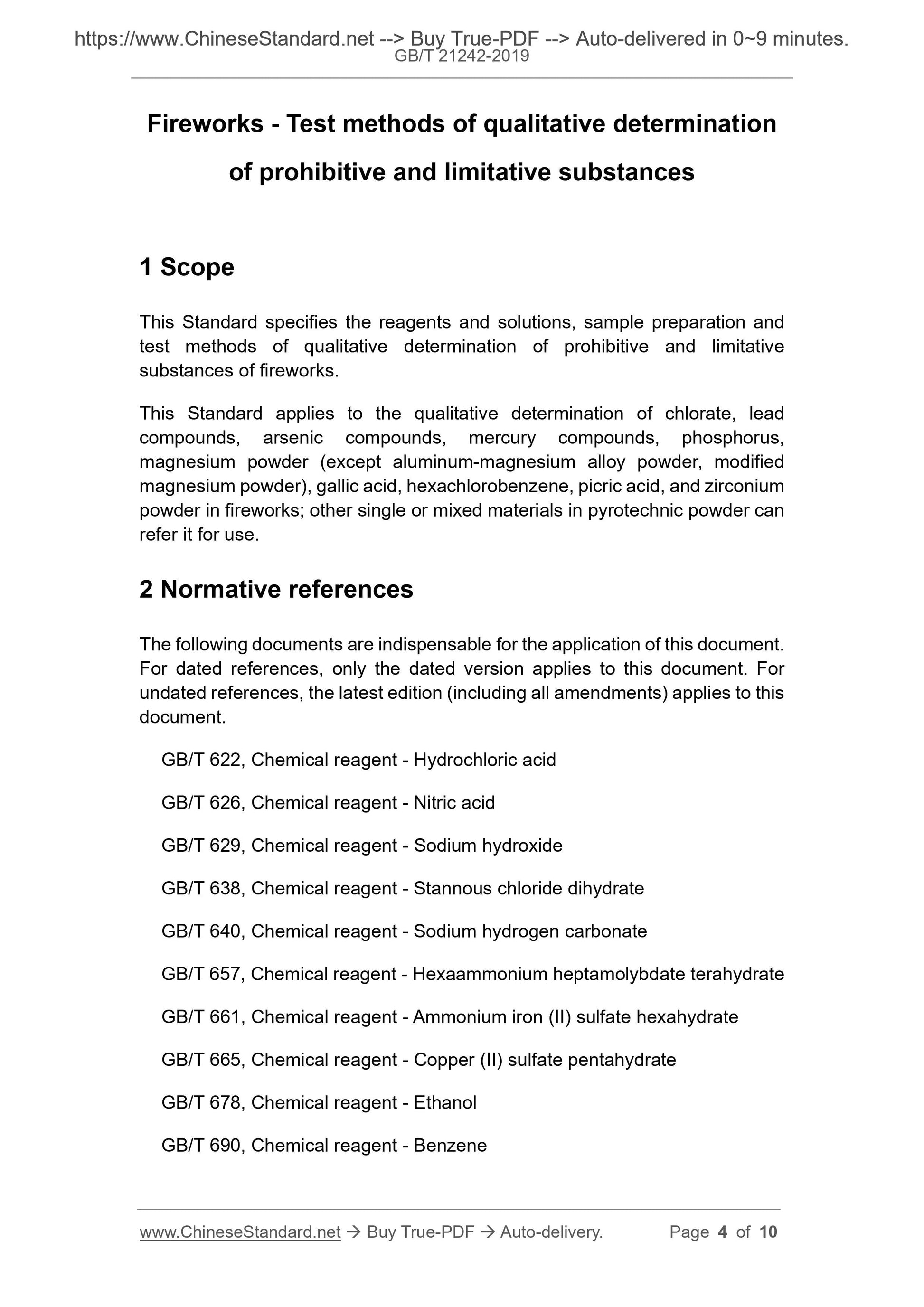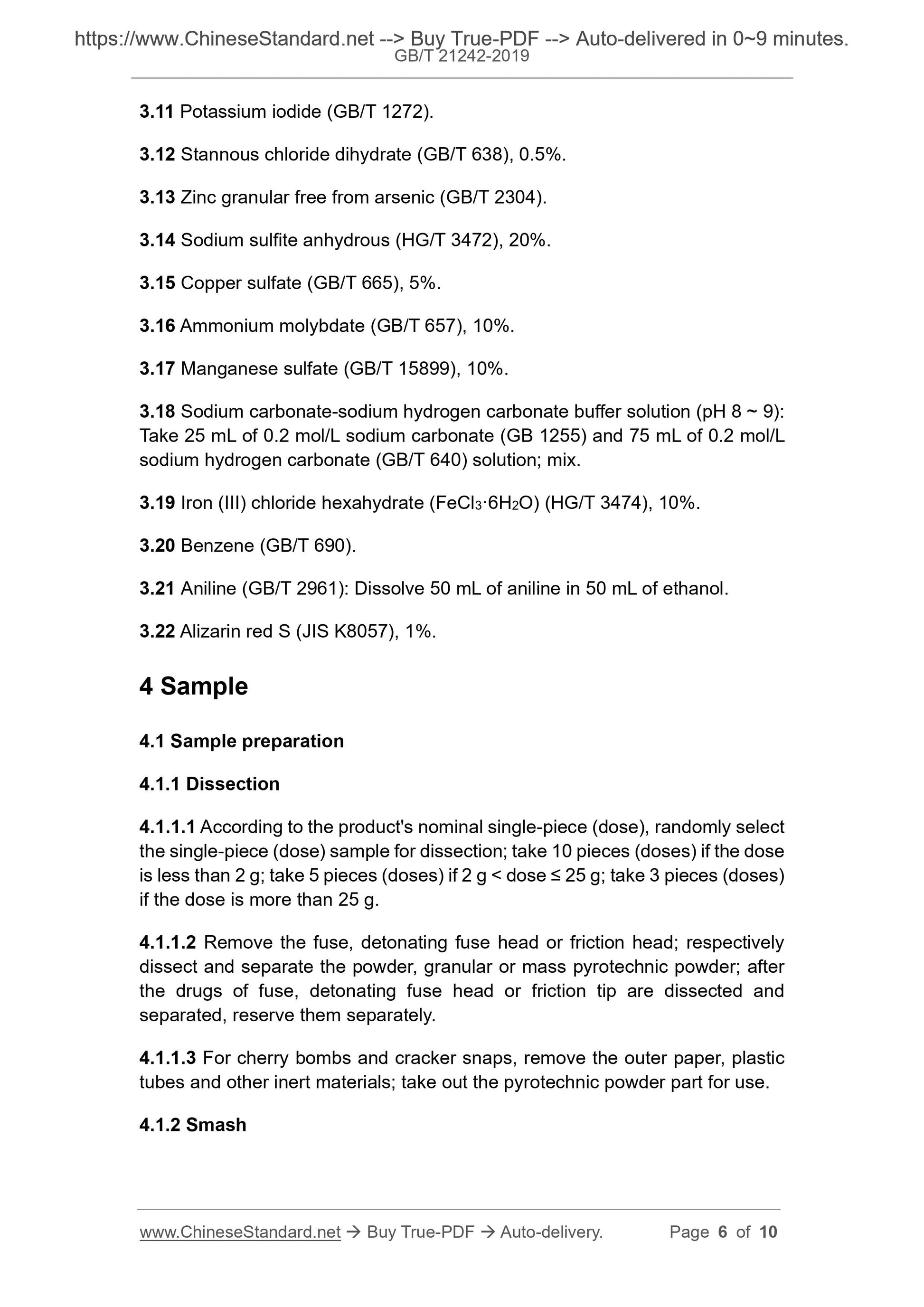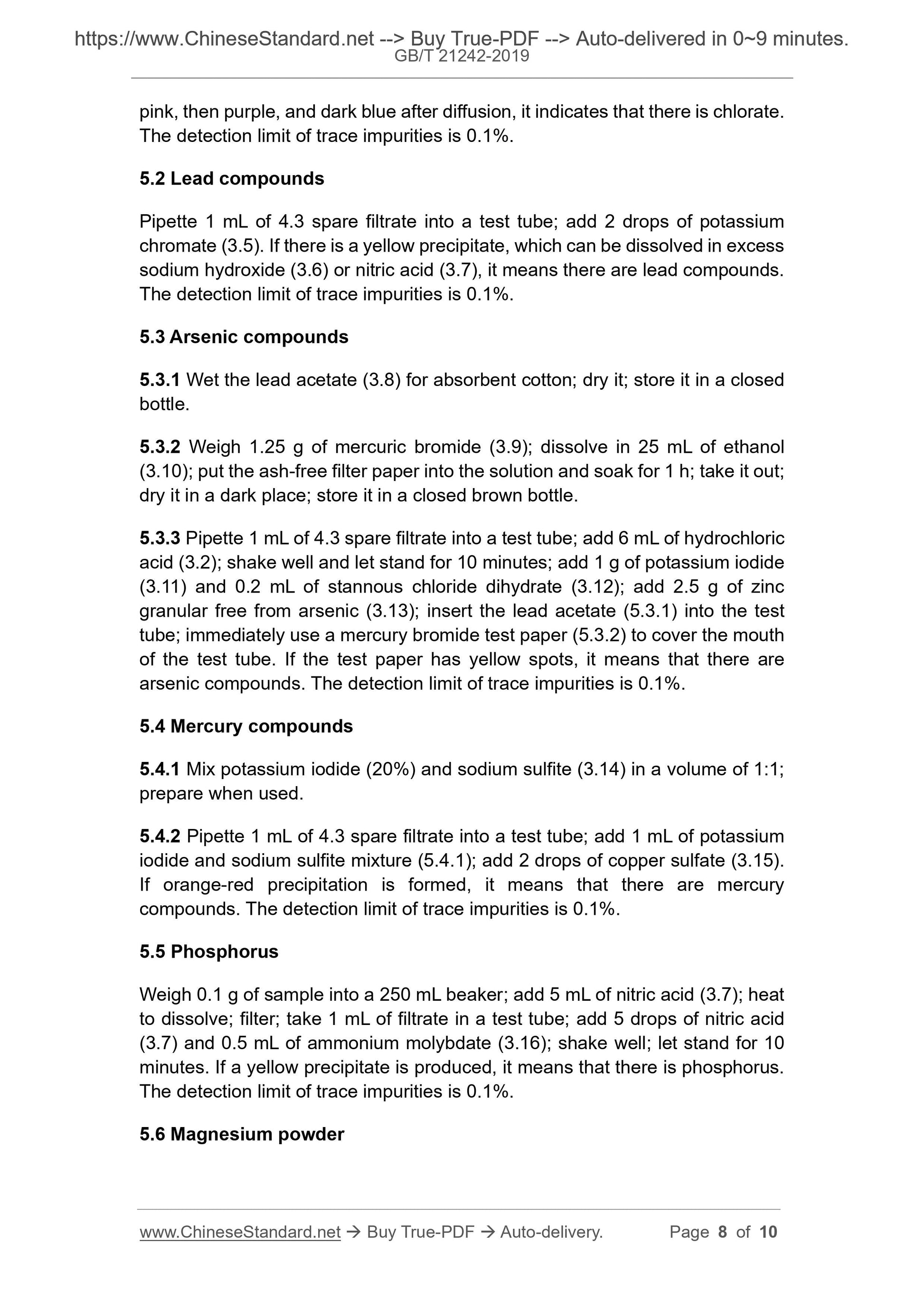1
/
of
5
www.ChineseStandard.us -- Field Test Asia Pte. Ltd.
GB/T 21242-2019 English PDF (GB/T21242-2019)
GB/T 21242-2019 English PDF (GB/T21242-2019)
Regular price
$175.00
Regular price
Sale price
$175.00
Unit price
/
per
Shipping calculated at checkout.
Couldn't load pickup availability
GB/T 21242-2019: Fireworks - Test methods of qualitative determination of prohibitive and limitative substances
Delivery: 9 seconds. Download (and Email) true-PDF + Invoice.Get Quotation: Click GB/T 21242-2019 (Self-service in 1-minute)
Newer / historical versions: GB/T 21242-2019
Preview True-PDF
Scope
This Standard specifies the reagents and solutions, sample preparation andtest methods of qualitative determination of prohibitive and limitative
substances of fireworks.
This Standard applies to the qualitative determination of chlorate, lead
compounds, arsenic compounds, mercury compounds, phosphorus,
magnesium powder (except aluminum-magnesium alloy powder, modified
magnesium powder), gallic acid, hexachlorobenzene, picric acid, and zirconium
powder in fireworks; other single or mixed materials in pyrotechnic powder can
refer it for use.
Basic Data
| Standard ID | GB/T 21242-2019 (GB/T21242-2019) |
| Description (Translated English) | Fireworks - Test methods of qualitative determination of prohibitive and limitative substances |
| Sector / Industry | National Standard (Recommended) |
| Classification of Chinese Standard | Y88 |
| Classification of International Standard | 71.100.30 |
| Word Count Estimation | 10,167 |
| Date of Issue | 2019-08-30 |
| Date of Implementation | 2020-03-01 |
| Older Standard (superseded by this standard) | GB/T 21242-2007 |
| Quoted Standard | GB/T 622; GB/T 626; GB/T 629; GB/T 638; GB/T 640; GB/T 657; GB/T 661; GB/T 665; GB/T 678; GB/T 690; GB 1255; GB/T 1272; GB/T 2304; GB/T 2961; GB/T 6682; GB 10631; GB/T 15899; HG/T 2630; HG/T 3440; HG/T 3472; HG/T 3474; JIS K8057 |
| Issuing agency(ies) | State Administration for Market Regulation, China National Standardization Administration |
| Summary | This standard specifies reagents and solutions, sample preparation and testing methods for qualitative detection of prohibited and restricted substances in fireworks and firecrackers. This standard applies to chlorate, lead compounds, arsenic compounds, mercury compounds, phosphorus, magnesium powder (except aluminum-magnesium alloy powder, modified magnesium powder), gallic acid, hexachlorobenzene, picric acid, zirconium powder in fireworks and firecrackers. For qualitative testing, other single or mixed materials in pyrotechnic powder can be used as reference. |
Share
